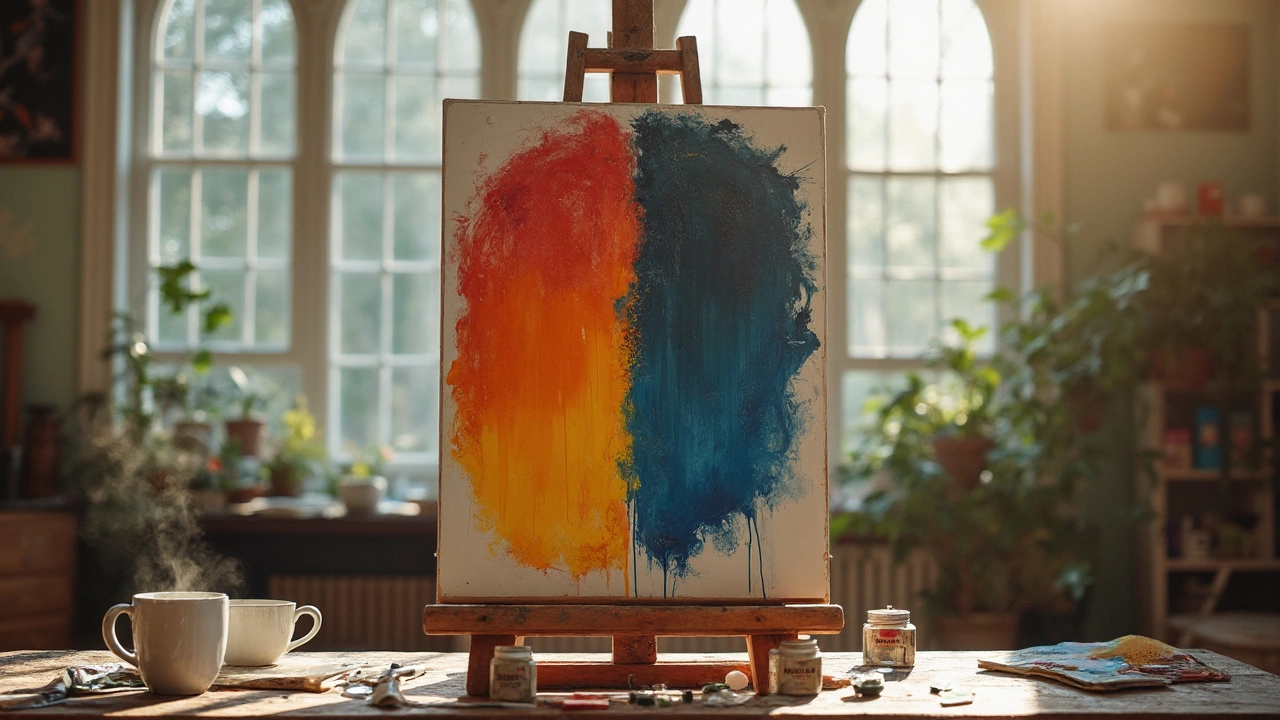What to Paint First in Watercolor: Tips for Beginners and Artists
10 Jul 2025Discover the best order for painting in watercolor. Learn why starting with light washes matters and how pros layer paint for stunning effects.
Continue reading...Ever stared at a blank canvas and wondered where to begin? You’re not alone. Most artists start with a handful of easy habits that turn confusion into confidence. Below you’ll find straightforward tips you can apply right now, no matter if you’re painting, sculpting, or experimenting with digital tools.
Pick one basic project and finish it before moving on. For sculpture, try the "easiest thing to sculpt" – a simple bowl or a rolled‑out clay cylinder. Using cheap, everyday materials keeps costs low and pressure low. When you see a finished piece, even a modest one, it fuels the urge to create more.
If you prefer painting, begin with the rule of thirds. Divide your canvas into a 3‑by‑3 grid and place the main subject along the lines or at their intersections. This quick composition trick makes landscapes, portraits, or abstract works look balanced without a deep study of art theory.
For digital art, start by converting a hand‑drawn sketch. Snap a photo of your drawing, open it in a free program, and trace over the lines with a basic brush. The process teaches you how layers work and gives you a clean base for color experiments.
One frequent error is over‑mixing colors. Grab a limited palette – three primaries, one white, one black – and learn how they interact. You’ll spend less time chasing the perfect hue and more time enjoying the process.
In oil painting, don’t panic if a wet layer dries unevenly. Instead of scrubbing it off, try a light glaze: thin a transparent color with a medium and brush it over the problem area. The glaze blends the mistake into the painting rather than erasing it.
When sculpting, avoid using heavy materials for early experiments. Cheap clay or even recycled paper mâché lets you make mistakes without breaking the bank. Once you feel comfortable, you can graduate to bronze or stone.
Digital creators often worry about copyright. Remember, platforms like Canva have a mix of free and licensed elements. Double‑check the license for each asset – it saves headaches later.
Finally, give yourself a deadline. A two‑hour sketch, a three‑day sculpture, or a week‑long painting challenge creates momentum. When the clock ticks, you’ll focus on what matters and stop over‑thinking every brushstroke.
These beginner tips are meant to be practical, not perfect. Try one tip at a time, notice what clicks, and keep moving forward. Art is a habit; the more you practice, the better you’ll understand your own style.
Ready to put these ideas into action? Pick a project from the list, set a timer, and see how far you get. The only requirement is to start – the rest will follow.

Discover the best order for painting in watercolor. Learn why starting with light washes matters and how pros layer paint for stunning effects.
Continue reading...
Thinking about painting a portrait but not sure if acrylic or oil paint is easier to use? This article breaks down the main differences in handling, drying times, and techniques for both mediums. Get real-life tips and hear about some common mistakes to avoid. Find out which paint suits your style and skill level, and how to make each one work for you. Make better choices and get more joy out of your next portrait project.
Continue reading...
Thinking about making your own digital art but not sure how to start? This guide cuts through the confusion and gives you straightforward steps, useful tips, and honest advice. You'll find out what tools you actually need, how to pick the best programs for your style, and ways to skip that dreaded creative block. It's all about getting you set up and having fun while you learn. No experience needed—just some curiosity and a little patience.
Continue reading...